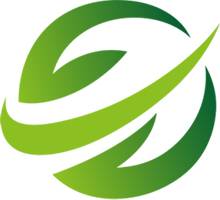Basic Info.
Product Description
1. Product descrition
Neodymium magnets, the correct definition is Neodymium-Iron-Boron (shortcut NdFeB magnets), have the highest adhesion force at smallest volume. These are often referred to as "super strong magnets" or "super adhesion magnets". Hereby Neodymium is a very high quality magnetic material.
Because of the excellent corrosion resistance, Neodymium magnets are used with a nickel coating at the most applications. Other coatings like epoxy are possible as well as gold or parylene. Our stock contains of several kinds of standard Neodymium magnets like block- / bar- / segment- / disc- or ring magnets. We can also offer you special designs according to your specifications/drawings on request.
Neodymium magnets can be used for holding applications, as a closure but also for sensory exertion. We would be pleased to assist you with the development of your application and advise you regarding design, quality, coating and magnetization to create an useful and economical product.
2. Advantages & Disadvantages of Neodymium Magnets (NdFeB)
Advantages
- Maximum performance relative to size. Ideal for restricted space or compact applications.
- Can be used in extremely cold conditions (e.g. in liquid nitrogen).
- Standard Neodymium NdFeB Magnet is rated to +80 degrees C (176F) maximum. Can be rated to +100 (212F), +120 (248F), +150 (302F), +180 (356F), +200 (392F) and +220/230 degrees C (428/446F) with higher Hci versions.
- High coercivity (Hci) to resist demagnetisation.
Disadvantages
- Requires a protective coating to prevent the iron in the alloy from corroding (rusting).
- Higher temperature versions contain more Dy element increasing their cost.
- Nd and Dy prices affect the production cost.
- Above 150-180 deg C (302-356F), SmCo may be better.
3. Typical Applications for Rare Earth Neodymium Magnets
NdFeB magnet is widely applied to Machinery, Video and Audio equipment, Communication Devices, Medical Devices, Office Automation Equipment, Space Flight and Aviation, etc. More than 95% of our products are used in energy-efficient PM-motors, especially in Servo Motor, New Energy Vehicles Drive Motor, Compressor Motor, Elevator Motor, High Speed Motor, Explosion-proof Motor, etc.Neodymium magnets are available in several different sizes and variations, including neodymium bar magnets or neodymium blocks, neodymium disc magnets, neodymium pot magnets, neodymium ring magnets. They are also available with attachments such as hooks or threaded attachments. They are also available with rubber coatings or adhesive backings. This gives a vast choice to suit a variety of applications including:-
- Neodymium Magnets for Motor and Generator drives including, wind and tidal turbines
- Meters
- Neodymium Magnet Speaker, Audio Equipment - headphones, microphones
- Computer Disc Drives and Printers
- Automotive (clamps, sensors, alternators, interior trims)
- Precision Magnets for Aerospace - sensors, navigation equipment
- Fine particle Magnetic Separation (magnetic rods, magnetic grids, etc) - 10-12kG (22-26lbs) systems
- High-performance magnetic clamps and pot magnets
- Electronics - switches, relays, sensors
- Lifting Heavy Ferrous materials - see neodymium magnetic lifters

4. What Are the Different Types of Magnetic Coating?
Some of the different types of magnet coatings are given below:
1) . Ni-Cu-Ni: The three-layer metallic coating of nickel-copper-nickel is the most popular option for neodymium magnets. It is well suited for magnets that are used in indoor products but are less resistant to harsher environments.2). Gold: Gold is a noble (inert) metal and therefore provides a biocompatible surface to the magnet. It can be used in medical applications, but also in jewelry and decorative applications.
3). Titanium nitride (TiN): This coating provides a very hard surface, but it is also biocompatible. It is commonly used for medical implants.
4). PTFE: PTFE is a thermoplastic that provides superior corrosion resistance and a very low friction coefficient. This is commonly used in food processing applications, including conveyors and bearings.
5). ABS: ABS is a thermoplastic that is relatively cheap and has good impact resistance. ABS-coated magnets are well suited to be fixed with glue and are also available in different colors for aesthetic purposes.
6). Epoxy: Often available as a black epoxy, this is a common coating material for magnets. It can be applied directly to a raw permanent magnet or sometimes applied over a metallic coating for additional protection. It is usually used in applications in which magnets are secured by an epoxy glue.
7). Rubber: Rubber coating for magnets provides primarily mechanical (abrasion) protection, but also provides corrosion protection. These are commonly used for mounting applications, in which a magnet may be repositioned repeatedly by hand.
| Surface coating | Color | Plating thickness(um) | Service temperature | Salt fog resistance |
| NiCuNi | Silvery | 20~30 | ≤200ºC | >72h |
| Ni | Silvery | 10~30 | ≤2000ºC | >48h |
| Zn | Blue/silvery/black | 10~20 | ≤160ºC | >48h |
| Epoxy Resin | Black | 10~30 | ≤120ºC | >96h |
| Chemical Nickel | Silvery | 5~30 | ≤200ºC | >200h |

5. Magnetization direction

6. Why choose us
1) More than 17years manufacturing experience
2) Professional factory, gold supplier, and trade assurance supplier in Made-In-China.
3) High quality products, competitive price and quickly delivery.
4) Customer-tailored spec. Is welcomed.

7. Packaging
a. Plastic separation will be put between strong and big pot magnets, then customer could be easily separate.
b. Batch magnets will be put in small white box.
c. 8 white boxes will be put in carton size 34x26x20cm.Foam form will be put between white boxes to avoid broken during shipment.
d.If by express or by air shipment,put iron sheet between foam form and external carton to shield the magnetic field.
